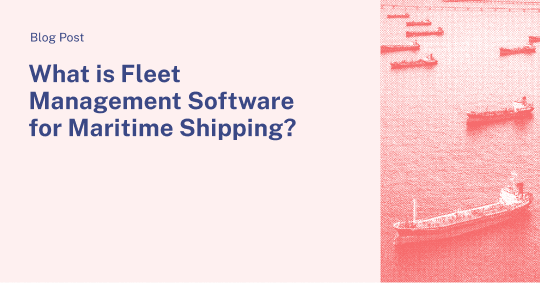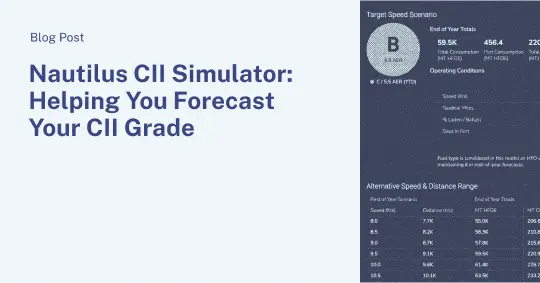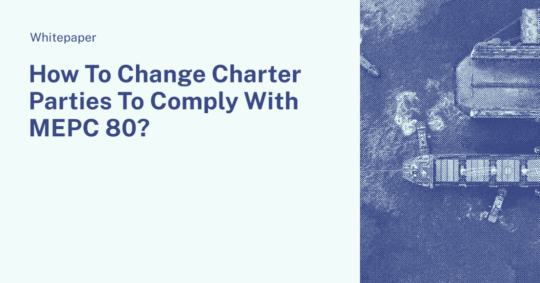The European Union Emissions Trading System (EU ETS) is coming for the maritime industry.
From January 1, 2024, the emissions of vessels over a certain size will effectively become a carbon tax on voyages that use EU waters and have an EU port of call. For vessel owners and charterers, it is the latest in a long line of regulations designed to dramatically reduce the energy-intensive shipping sector’s greenhouse gas emissions (GHG).
The question for them is, how do they manage it successfully without reducing their own competitiveness?
What is EU ETS?
Launched in 2005 as part of the EU climate policy, the EU ETS directive began as a cap and trade system for placing carbon levies on major emitters in European industrial sectors. Initially, some industries, including shipping, were excluded, but as the climate emergency has intensified, so too has an EU-wide determination for action, and the industry’s exemption has ended. If the total emissions intensity of shipping activities grows as projected, it will undermine the objectives of the Paris Agreement to avoid dangerous climate change by limiting global warming to well below 2°C and pursuing efforts to limit it to 1.5°C.
The EU ETS builds on the Monitoring, Reporting, and Verification (MRV) system, introduced by the European Commission in 2018. These measures form part of the EU’s ‘Fit for 55’ package, which provides a regulatory pathway towards a 55% reduction in carbon emissions by 2030. Within the environmental policy, the commission made several proposals to address the climate impact of maritime transport, including:
- Extending the EU ETS to maritime transport, thereby creating a carbon price signal
- Accelerate the demand for renewable and low-carbon fuels in a move away from fossil fuels by setting a maximum limit on the GHG content of energy used by ships calling at European ports
- Improving alternative fuel infrastructures, which would set mandatory targets for shore-side electricity supply
- Advance the supply of renewables in Europe through a revision of the Renewable Energy Directive (RED)
- Revising the existing Energy Taxation Directive (ETD), which aims to align the taxation of energy products with the EU’s climate change objectives and remove outdated exemptions, such as those for the intra-EU maritime transport sector
How does the EU ETS work?
When it comes into effect, the maritime EU ETS will apply to all vessels of 5,000 gross tonnage or greater carrying cargo or passengers for commercial services engaged on voyages to or from ports within the EU’s jurisdiction. Put another way, if the vessel enters EU waters and has an EU port of call, it will fall into the EU ETS.
Vessel owners will need to pay, or “surrender,” one carbon credit (called an ‘EU Allowance’ or ‘EUA’) from a dedicated carbon account for each tonne of in-scope carbon dioxide produced and, from 2026, methane and nitrous oxide. In 2027, it will apply to offshore ships of the same size operating in EU waters, and at a later stage, it will apply to vessels of between 400 and 5,000 GT on the same routes.
The EU plans to auction 78.4 million carbon credits from the European carbon market to the shipping industry, generating nearly EUR 8 billion (US$9 billion) in the first year. These proceeds will be invested in European fleet renewal programs and distributed among member states to support national transport EU emission reduction schemes. Some carriers have already announced ETS surcharges in preparation.
The first annual emissions reports must be submitted by 30 September 2025, but the cost ratio applied will increase incrementally over the first three years. During this adjustment phase, charges will equal 40% of verified emissions reported for 2024, 70% for 2025, and 100% from 2026 onwards.
Businesses will be entitled to buy and sell unused credits on the open market, which could represent an additional revenue stream for fleets capable of trading excess emission allowances. Presently, each credit’s market price is about EUR 100 (US$112). If that remains constant, Deloitte estimated that the cost of compliance for a container ship with a CO2 emissions profile of 16,000 tCO2e per year would be €540,000 in 2025, rising to €1.35 million by 2027. However, if the EUA price rises (highly likely, given that it has increased by over 900% since 2018) at a rate of 5.5% per year, that figure would jump to €1.66 million in 2027.
What is the punishment for failing to comply with the EU ETS?
The EU ETS is another complex regulation in an industry not known for its simplicity and requires significant gathering, selecting, and distributing of information. What happens then, if a vessel is non-compliant?
First, the ship may be denied permission to trade, or even expelled, from the EU, while shipping companies not surrendering sufficient emission allowances will be fined €100 per tonne of emission not accounted for. If this continues for two or more consecutive years, the company’s entire fleet can be denied entry into the EU.
From 2026, shipping companies must surrender allowances equal to all their emissions. If fewer allowances are submitted than actual emissions in a reporting period, those extra emissions will lead to a cancellation of allowances.
What does the EU ETS mean for vessel owners and charterers?
In situations like this, the reaction of many in the sector is to implement initiatives that look at the vessels themselves to reduce GHG emissions. Can they be retrofitted, or swapped with new builds? Can heavy fuel oil (HFO) be replaced with alternatives? What if we add energy-saving devices or low-carbon technologies? Can the way they are operated change?
This is certainly all possible. But some of these measures are long-term, some will have limited impact on emissions produced during an EU part of a voyage, and none alone can quickly deliver the results that businesses need.
Where does that leave vessel owners and charterers?
First, it’s important to understand who is responsible for the EU ETS charges.
The World Shipping Council notes that “vessel owners and operators have a shared responsibility to drive GHG reductions.” Regarding the EU ETS, shipowners, ultimately, have to make the payments. However, in cases where the owner is not responsible for vessel emissions, they can claim those costs back from the charterer.
The challenge is ensuring a fair and equitable charter party agreement. As with other regulations, such as the Carbon Intensity Indicator (CII) and Energy Efficiency Existing Ship Index (EEXI), any clause must reflect the reality of vessel operations, not theoretical assumptions. While there are already standard clauses, such as the BIMCO EU ETS clause, available, this isn’t just a case of inserting a new clause.
There needs to be a single point of truth that can be trusted by the shipowner, charterer, financier, and charging authority. Transparency is key to aligning stakeholders on EU ETS overhead calculations. Getting this right will reduce contract management costs, and with the right tools in place, the same source data could also be used to minimize in-scope carbon emissions.
Let’s be clear: without an operational strategy for reducing emissions, per-tonne costs could significantly impact Time Charter Equivalent (TCE) earnings. This is most obvious in depressed freight rate environments. But even with stronger cargo demand, balancing the speed-consumption ratio to account for the bunker and carbon prices will become critical to profitability.
But that needs to work in tandem with a charter agreement that reflects the agile, dynamic nature of shipping today, not something static and antiquated.
So, what can vessel owners and operators subject to the EU ETS do to mitigate the impact on their businesses?
Reducing the cost of the EU ETS
Vessel owners and operators need to achieve two main things to reduce the cost of the EU ETS.
First, they need access to data and the ability to analyze it to meet reporting requirements and identify opportunities for reducing emissions.
Second, they need a dynamic agreement that allocates and handles EU ETS charges fairly between parties.
Fortunately, there is a way to solve both.
Digital twins – a route to charter collaboration and EU ETS mitigation
Vessel owners and charterers need a way to calculate real-world emissions data, provide a single data window for charter parties, and simulate voyage profiles to plan optimal voyages and minimize exposure to EU ETS costs. One way of doing this is through the use of machine learning and digital twins.
Digital twin technology applies machine learning to build highly accurate digital replicas of physical assets, including ships. By processing complex high-fidelity data sets, digital twins can mirror ship performance characteristics to a deep level of accuracy.
A digital twin can perform highly accurate emissions calculations by applying real-world data, including energy consumption, weather and sea conditions, cargo loading, shaft power and routing information. These calculations can be used to simulate voyages before they are carried out and to understand the journey’s carbon footprint.
This testing and iteration capability allows users to determine the optimal cost-reducing voyage profile. These unique insights are a way of de-risking and reducing cost exposure on EU ETS in-scope routes.
The technology also makes it possible to overhaul legacy charter party agreements with clauses that promote efficiency and better environmental and commercial outcomes. Gaining access to real-time performance reporting and optimization recommendations, charter parties no longer need to tolerate misaligned incentives. Shipowners and charterers gain access to performance benchmarks to drive technical and operational performance collaboratively. As we move to a time when stack emissions carry direct cost penalties, a more collaborative approach to efficiency becomes vital among charter parties.
Beyond the EU ETS
The EU ETS is just part of what makes up a new era in shipping and its path to sustainability. Along with the likes of CII and EEXI, as well as MEPC 80’s targets and other broader goals, the first maritime emissions trading scheme of its kind forces owners and charterers to look not just at how they operate but at their contractual agreements.
This new situation requires a fresh approach to voyage performance and charter party contracts. Shipowners, charterers, and managers need confidence in their decision-making and reliable oversight of GHG emissions and their developing commercial impact.
An intelligent, technology-backed strategy for absorbing the EU ETS and other schemes will be pivotal to minimizing cost exposure and remaining competitive in the years ahead.
Digital twin technology is readily available to make market-based emission reductions a success story for merchant shipping. But this technology can help with more than just compliance. It can find new efficiencies, and this can save time, reduce bunker consumption, and minimize EU ETS cost exposure. Now is the time for shipping companies to onboard their chosen solutions without delay.
Take a look at our fleet performance management solution Fleet Essentials to understand how digital twins underpin a modern approach to emissions reduction.
–
The European Union consists of 27 EU member states: Austria, Belgium, Bulgaria, Croatia, Cyprus, Czechia, Denmark, Estonia, Finland, France, Germany, Greece, Hungary, Ireland, Italy, Latvia, Lithuania, Luxembourg, Malta, Netherlands, Poland, Portugal, Romania, Slovakia, Slovenia, Spain, and Sweden.


